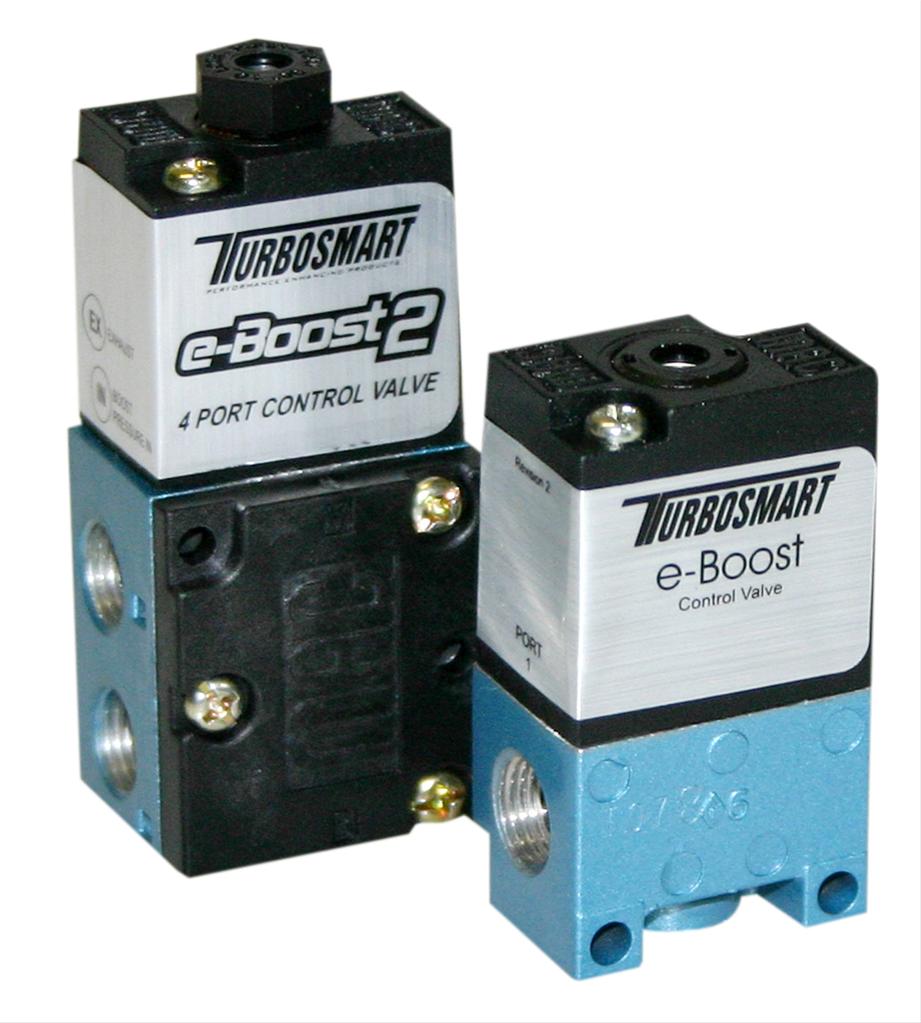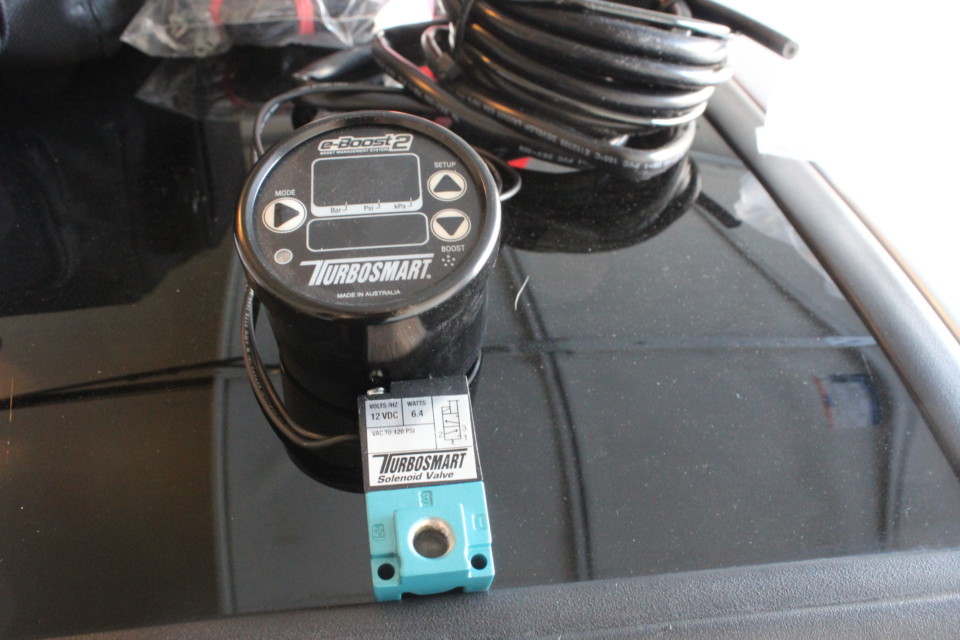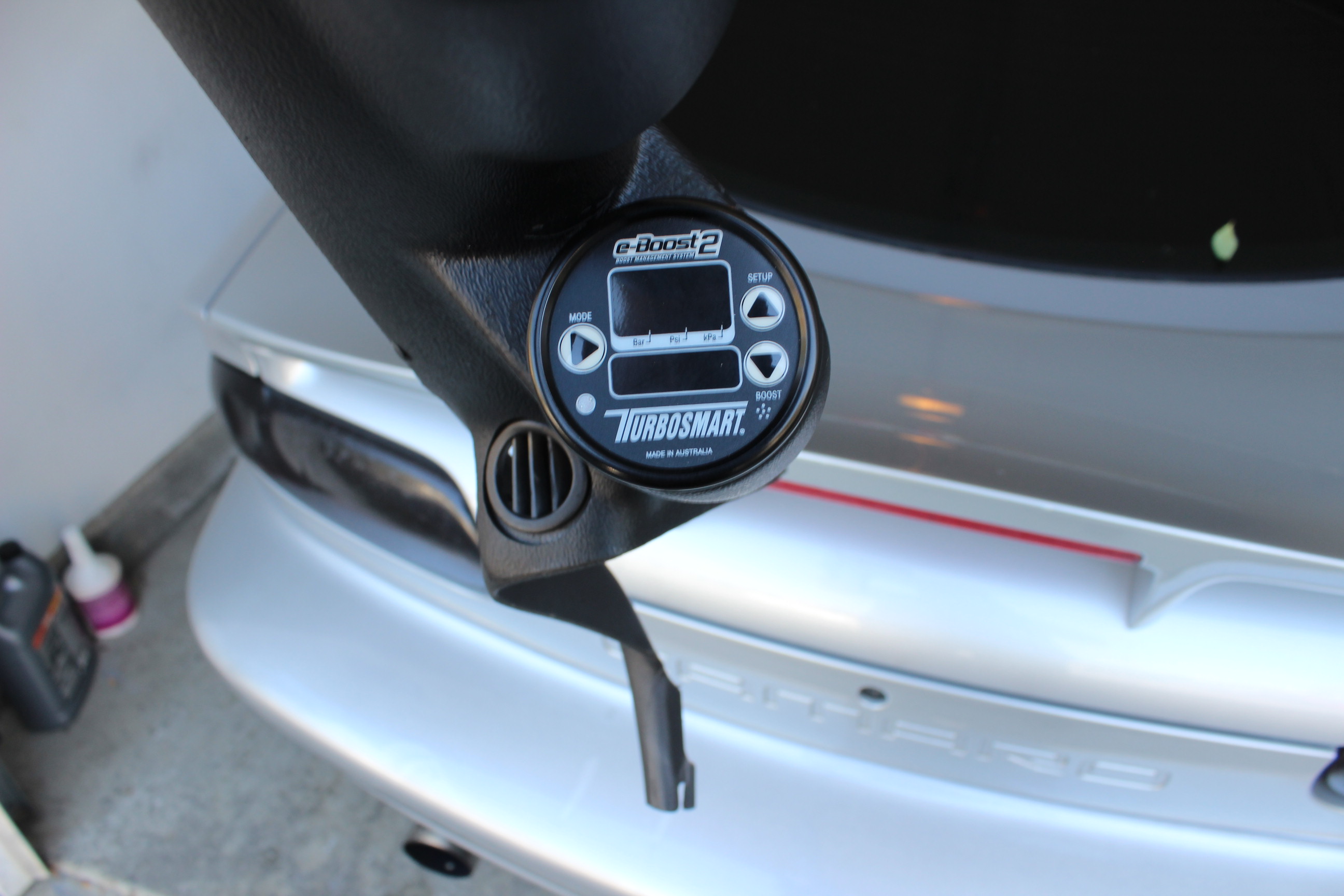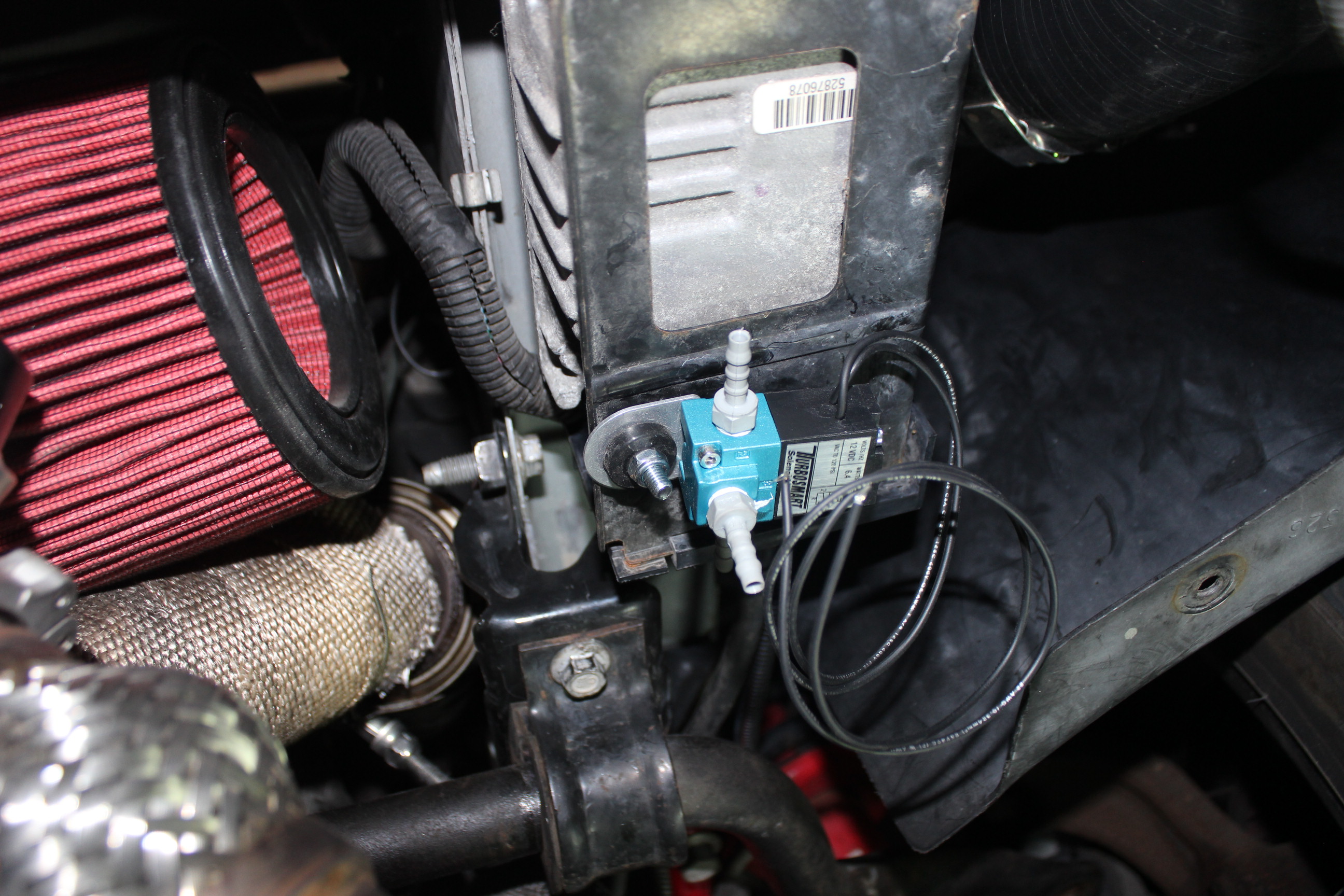Almost anything in life can be addictive, however, some things are intrinsically more so than others. You could be addicted to chocolate, caffeine or something far worse. But today we’ll be talking about an addiction that is taking the nation by storm and causing quite a bit of damage along the way. The kids are calling it “boost,” and at this point, it’s an epidemic. Say it with me, “I’m a boost-a-holic.” Doesn’t that feel better?
The simple matter of the fact is that there is no such thing as “enough boost.” Sure, you might think you’ll be happy with 6-pounds, but by the time the weekend has rolled around and you’ve put your foot into it several times, it just stops being enough. So you up it, and up it, and up it until something finally gives. Sound familiar? And while it may seem like a slippery slope, it’s the most fun slope you’ve ever slipped down.
In fact, that is one of the beautiful things about upping the boost on something with a turbo. By other power adder standards, it’s simple: you’re just a button push away from more boost. We are officially at the peak of that slippery slope with Project Corn Star, our E85-fed, turbocharged fourth-gen Camaro. In case you haven’t been following along, you can check out the build thus far here. But today we’ll be talking about how we’re going to control Corn Star’s boost levels with Turbosmart’s e-Boost2. And then we’re going to up it. Oh man, I’m jonesing just thinking about it.
Boost Controllers
In case you’re unfamiliar with how a turbocharger system regulates it’s boost pressures, we’re going to give you a crash course, then we’ll dive into how boost controllers work and how Turbosmart’s e-Boost2 gives you almost infinite control over how that boost pressure.
As you may well know, the turbocharger is spun by exhaust gases flowing past a turbine wheel. This rotates the wheel, which is connected via a shaft and in turn spins an attached compressor wheel that sucks in the atmosphere and stuffs it down your engine’s throat. It’s a simple system until you start thinking, “Well, I don’t know if I want all of the boosts right away.” After all, you’ve got to work your way up to that big hit.
That’s where a wastegate and boost controller come in. The wastegate is essentially a spring-loaded diaphragm that, when open, allows exhaust gases to bypass the turbine and flow into the rest of the exhaust, or straight into the atmosphere. This allows the system to regulate how much boost the engine is seeing. The spring weight, and a boost line that is referenced to the charge side of the turbo determine at which boost pressure the gate is forced open and boost stops climbing
In Corn Star, that boost pressure is just 7-pounds thanks to our Turbosmart Hypergate 45mm wastegate. This is a very safe boost pressure for our setup and would work fine on its own. But we’re not looking for fine, and when the boost bug bites, you’re off to the races – this is where the boost controller comes in.
The boost controller typically sits in the boost reference line that is coming from the compressor housing – or some other boost reference point in the system – and going to the bottom port of the wastegate — though there are many other ways to configure them. The way a boost controller allows you to add boost is by interfering with that signal coming from the compressor housing. There are a couple of ways to do this, some more advanced than others.
The simplest solution is a mechanical boost controller. Essentially, it is an adjustable valve that sits in the boost reference line between the wastegate and compressor housing. By closing it off, it weakens the signal coming from the compressor housing which means it takes higher amounts of boost to push open the wastegate and allow exhaust gases to bypass the turbocharger. Mechanical boost controllers are simple and easy to use but require you to get under the hood and manually adjust the valve if you want to up the boost. You can also accomplish this same task in turbocharged vehicles with internal wastegates by installing the mechanical controller or by winding the rod the actuates the wastegate in and out, thus increasing or decreasing the time at which it will open.
And while a mechanical setup is fine for most configurations, what happens when you have too much boost in first gear for the car to plant, but then not enough boost in the higher gears when traction is plentiful? Couldn’t forcing the wastegate to stay closed longer before opening reduce turbo lag times? What if you want to adjust boost from inside the car? If you’ve had any of these questions, then an electronic boost controller is the answer you’re looking for.
An electronic boost controller uses a solenoid in place of an adjustable valve in the same location. There are a myriad of ways you can set up an electronic boost controller to control the wastegate(s), but we’ll stick to the simple example for now. Instead of adjusting a mechanical valve, you adjust the duty cycle (the time the solenoid is open or closed) to bring boost pressures right where you want it. In this system, you can typically adjust boost pressure with a push of a button. Whether that is a good thing all depends on how you use it.
One of the most advanced examples of an electronic boost controller is Turbosmart’s e-Boost2. Not only will it allow you to adjust boost pressure levels from the comfort of your driver’s seat, but you can also program boost pressures by gear, by time, or by RPM. It can operate an external device and can even recall the highest boost pressure achieved during your run. It solves a lot more problems than just controlling boost pressures from inside the cockpit.
e-Boost2
The original e-Boost2 was released back in 2002 and Turbosmart has been improving on it ever since. It’s currently in its third generation and is packed with amazing features that allow you to control virtually every parameter of your turbo setup imaginable.
Obviously, you can use it to set boost pressure, but you can also store up to six boost settings allowing you to increase the boost at the push of a button, and on the fly, no less. Also, unlike a mechanical boost controller which gradually eases off the boost until your chosen boost pressure is reached, the e-Boost2 can be set with a target boost pressure. Once this value is set, the e-Boost2 will prevent the wastegate from receiving signal until just before you reach your desired boost pressure. This increases torque, decreases turbo lag, and ensures you come up to boost pressure as quickly as possible.
Another great feature of the e-Boost2 is that it can automatically turn the pressure down in case of an over-boost situation. You just tell it when to shut everything down and the controller will open the wastegate when that pressure is reached – given everything in the system is still working. Turbosmart also suggests hooking the controller to an external output that would allow it to shut the car down or pull timing as well in the off chance that a mechanical failure prevents the e-Boost from bleeding off boost via the wastegate.
One of the most useful features the e-Boost2 offers is its ability to control boost by gear. If you have a serious setup, you know that this feature is indispensable. In high-horsepower setups, you don’t necessarily want your total set boost pressure to be achieved in First gear where traction is at a premium. This could easily lead to you overpowering the tires and losing the race. With the e-Boost2, you simply define your set point strategy – how the car will know to advance or retard to the next or previous boost setting – and give the e-Boost2 a way of activating.
“The eB2 is not difficult to set up for boost-by-gear but sending the grounded input signals can be simple to complicated, depending on the vehicle,” said Marty Staggs at TurboSmart. “One way or another, the eB2 needs a ground signal to tell what gear it is in to make the appropriate change. This can be done using micro-switches, a clutch-operated switch, or outputs from the ECU or TCM.”
A simple way to accomplish this in a six-speed car like our own is to mount microswitches that are activated when the vehicle is placed in a specific gear. With this strategy, the e-Boost2 can do four separate boost levels. And since in the higher gears we’ll want full boost, it’s just a matter of setting up the first three gears. This can be accomplished by grounding a set of wires that tell the e-Boost2 to advance to the next set point, which is where you set your desired boost pressure. This allows you to control how much boost the car is making in any particular gear – let’s see a manual boost controller do that.
The e-Boost2 also offers RPM-based set point mapping — this allows you to build your own boost curve, based on RPM. This is a useful function if you’re seeing boost dips at any given RPM allowing you to smooth out boost delivery. This is, again, especially important in high-horsepower applications where fluctuations in power delivery could unsettle the chassis and lead to a decrease in traction.
On top of all of this functionality, the e-Boost2 can also act as a shift light and warning light when a certain conditional parameter is met. After learning about the e-Boost2’s features, we were left with one huge question: is there anything it can’t do? Staggs tells us that with all of the extensive functionality of the e-Boost2, it is often underutilized in many applications.
“It’s such a capable product; many people get overwhelmed when looking at our comprehensive installation manual,” Staggs said. “At the end of the day, the eB2 really only needs power and ground to take full control of the boost. All of the other wires and programming are for more advanced features and functionality such as multi-stage boost control (up to six stages), RPM-based boost control, time-based boost control, RPM-based boost compensation, and nitrous or methanol injection control.”
However, if the features of this capable controller ever overwhelm you, Staggs tells us that Turbosmart is there to walk you through setting your e-Boost2 up for optimal performance in any given application. He also recommends making one change at a time, an issue TurboSmart frequently sees.
“Making too many programming changes at once is never a good idea,” Staggs elaborated. “It’s better to always start with adjusting the SP1 value until the car is making the desired boost and then start making other adjustments for a response or other factors after that is done.”
Install
After learning about all the great features our newly-acquire boost controller possessed, we were ready to get to work installing it. While the e-Boost2 features a very complex set of capabilities, installing it is relatively straightforward. And since we weren’t ready to set up our boost by gear (just yet anyway), setting up the controller was simply a matter of giving it power, ground, boost reference signal, and wiring in the two output wires to our control solenoid.
We started by mounting the gauge in our AutoMeter A-pillar gauge pod. Our pod was designed for 2-1/16-inch (52mm) gauges but the e-Boost2 measures in at 58mm. To correct for this, we simply took a Dremel to the pod to hog out the hole a little bit so that it will fit. Since the pod is soft ABS plastic, taking enough material out was a breeze.
Left, we connected the wires to our boost solenoid by connecting our brown and grey wires to the long length of wire. Right: we ran our boost referrence line to the gauge with the provide tubing.
Once the gauge was physically mounted, we ran our power from a bus bar that we had set up previously with our wideband gauge and the black wire to a common ground. With this accomplished, it was only a matter of running our solenoid and boost reference hose through the firewall and into the engine compartment. We used an existing hole in the firewall to thread them through.
The boost reference line was then plugged into our vacuum/boost manifold mounted on Corn Star’s inner wheel well. This allows our e-Boost2 to act as our boost gauges, as well. With our solenoid wires run, it was now time to find a home for our boost controller solenoid.
We drilled a hole in the cruise control module bracket to mount the solenoid. Next, we mounted the solenoid bracket with the provided hardware and plumbed the solenoid into the boost reference line.
We found a spot to mount the solenoid just behind one of the plastic panels under the front bumper. With the plastic shielding removed, we drilled holes for the provided bracket. With the bracket mounted, the solenoid was then attached to the bracket and the vacuum lines were run. Since our setup is a single turbo system, we chose a simple routing that will function just fine for us. However, the e-Boost2 manual provides routing instruction for just about every scenario imaginable and gives you reasons you would route them differently. For ours, we simply had the boost reference line from the compressor housing routed to port 3 of our solenoid. Then, from port 2 to the bottom port of the wastegate. Port 1 and the top port of the wastegate were left open to atmosphere.
With the solenoid plumbed in, we finished things off by connecting the two wires from the controller to the solenoid – the polarity doesn’t matter since the controller is oscillating the solenoid. We then hid the solenoid by putting the black plastic covers back together again. However, you want to be sure none of the hoses are kinked or even minorly squeezed. That can affect the signal the wastegate is getting and lead to overboost conditions.
Setup
With everything taken care of on the install, it was time to set up our e-Boost2. To do this, we started up the car. It immediately began reading vacuum/boost. We then press and hold the “Mode” and “Setup” or up arrow. The first menu displays “obS” or overboost shutdown; we set this to 12 psi by hitting the “Mode” button again, then arrowing up to 12 psi, then we hit “Mode” again to save the value. We set ours at 12 psi since 10 psi will be the maximum value we want to see while we are tuning the car under boost for now. Turbosmart recommends a value of roughly 2 psi more than the maximum amount you want.
With overboost shutdown set, we moved on to our next menu, which is the number of setpoints, by going back to the menu and pressing and holding “Mode” and then the up arrow. This is the number of boost settings we will want. We set ours to three, as we want a low-, mid-, and high-boost setting. We set and saved those the same way we did with overboost.
We then moved on to the next menu, which is the number of cylinders, which we obviously set to eight. This is only needed if you run an RPM signal to the controller, which we didn’t connect yet, but we set it regardless. Our final two menus needed for setup are “SCL” which is the scale we want the gauge to read in (kPa, PSI, Bar, etc.) and “bGr” which is a bar graph.
We set our scale to PSI. In the bar graph, you will want to set it up for your target boost. This enables the bar scale at the bottom of the gauge to function correctly, so you know if you’re above your target boost at a glance. From the factory, this gauge is set to 15 psi; since we are targeting 10 psi, for now, we set ours to 10. With our initial setup values input, we were ready to move on to controlling our boost.
To get into our setting for controlling boost, we hit “Mode” and “Setup” together once. Then, we hit “Mode” once which brings up “bG1” or boost group 1. This is the first group of the three groups we enabled earlier. Hitting the up arrow at this point brings up to “SP1” or setpoint 1. This is the value we will change that controls the duty cycle of the solenoid and allows us to increase boost pressure. You can do this statically or while on a dyno in live mode to increase the duty cycle until you are reaching your desired boost pressure on a scale of 0-99 with 99 being closed almost all of the time and 0 being wide open constantly. If you’re just doing this statically, you’ll have to increase the duty cycle, run the car, check what the maximum boost achieved was with peak recall, and then adjust from there. We set our duty cycle to 15 for now.
After saving the setting by pressing “Mode” once, we then press and hold “Mode” to back out to our previous menu. Then, using the up arrow, we bring up our next menu “GP1” or gate pressure 1. This is the value you want the controller to target before it ramps boost to your desired pressure. Turbosmart suggests that you set this 5-pounds below the desired pressure. For instance, say your target pressure was 15 psi; you’d set your gate pressure to 10 psi. Then, the controller would keep the wastegate completely shut, regardless of wastegate spring pressure, until it reached 10 psi, then it would slowly start bleeding off exhaust gases, so the turbo comes up to your desired pressure as quickly as possible. However, setting it 5 psi below target pressure ensures you don’t overshoot your target and cause a boost spike. This decreases spool times and increases torque.
Our final menu is “Sn1” or sensitivity. From the factory, this value is set at 20 and will be fine for most. However, if your boost curve fluctuates a lot, you’ll want to decrease the sensitivity. If your boost curve falls off in the higher RPM range, you’ll want to increase sensitivity. We left ours at the stock setting.
Testing
With all of our values in our e-Boost2, we were ready to test it out on the street. With a duty cycle of 15-percent, our boost came right up to 9-10 psi, just where we wanted it for now while we are still getting the tune dialed in. With the duty cycle set to 0, boosted peaked at 6-7 pound, or wastegate spring pressure, meaning our boost controller is functioning just like it should.
Overall, for the broad functionality the e-Boost2 brings with it, it is amazingly simple to install. We will get more advanced with the operation of it on Project Corn Star in the future, but for now, it was doing just what it should: giving us more boost. And while that’s great, there’s a reason they say “the first hit’s free.” But it’s not a big deal… we can quit anytime we want!









































